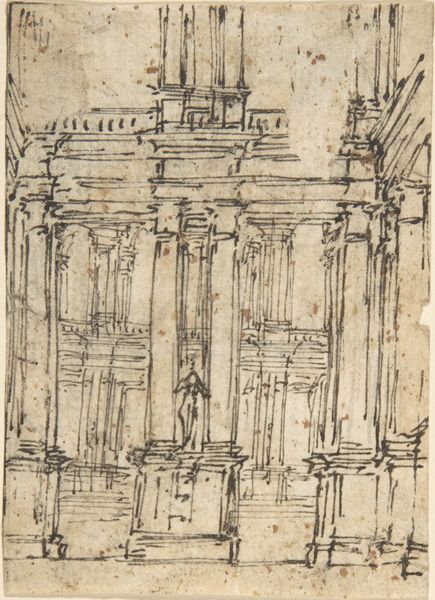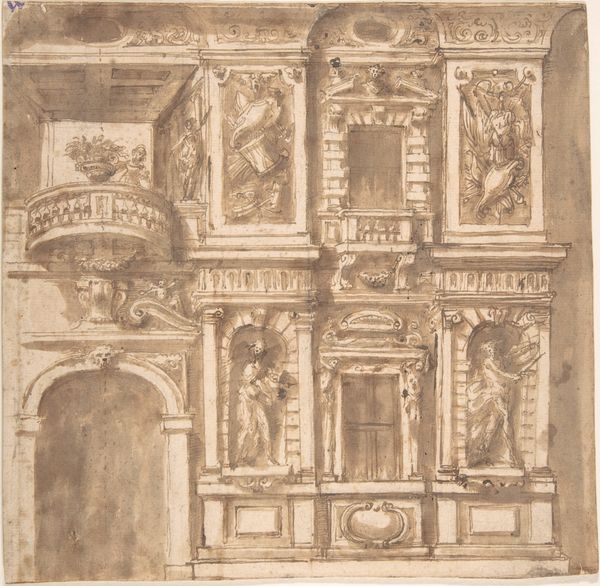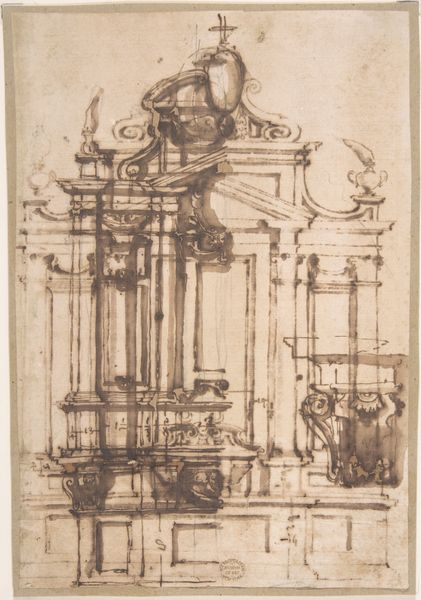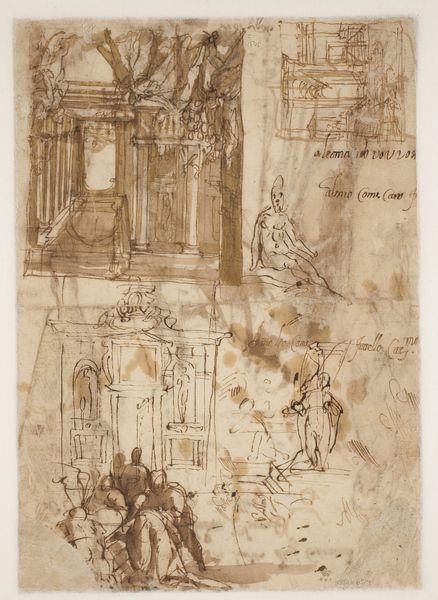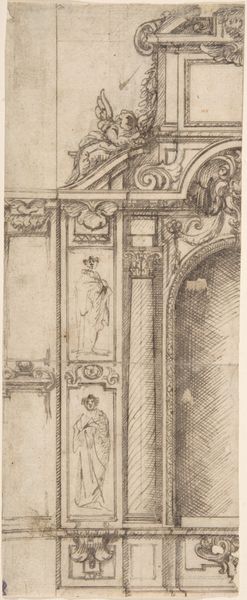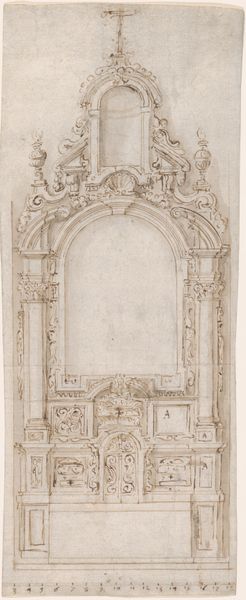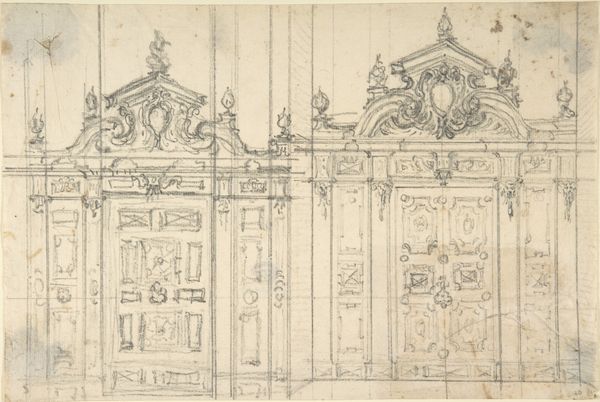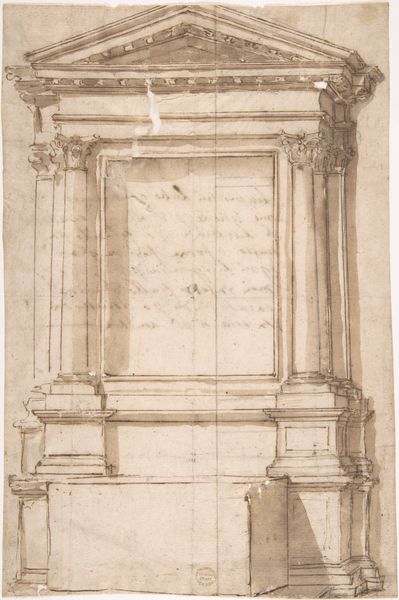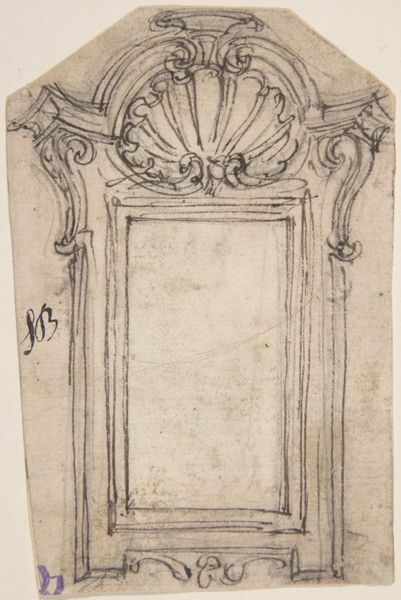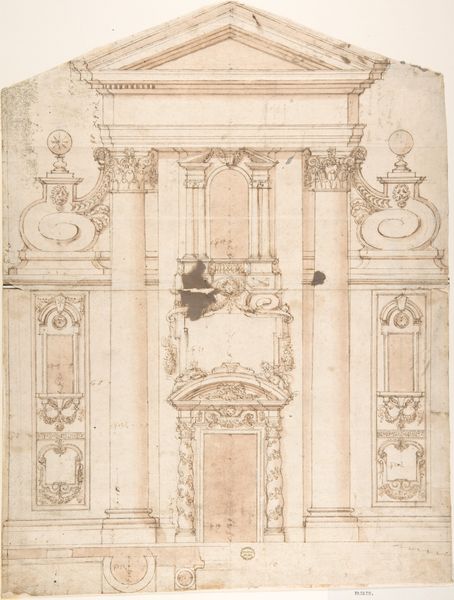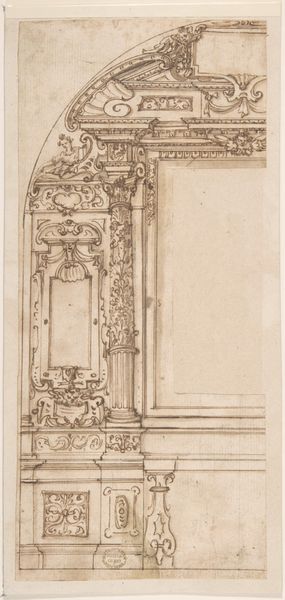
Left Half of a Design for Garden Architecture 1600 - 1700
0:00
0:00
drawing, print, ink, architecture
#
architectural sketch
#
drawing
#
baroque
# print
#
landscape
#
etching
#
form
#
ink
#
geometric
#
line
#
cityscape
#
architecture
Dimensions: 5-1/4 x 4-1/8 in. (13.3 x 10.5 cm)
Copyright: Public Domain
Curator: Here we have an intriguing drawing, "Left Half of a Design for Garden Architecture," created anonymously sometime between 1600 and 1700. It’s rendered in ink, which has faded with age, giving it a ghostly quality. Editor: My first impression is that it’s a rather formal, rigid design, despite being a garden plan. All those straight lines, the calculated symmetry... it almost feels like a stage set rather than a space meant for nature. Curator: Precisely! Baroque gardens were extensions of architecture and power, not merely places for leisure. Consider the geometric forms meticulously etched. They signify control, a visual representation of humankind's dominion over the natural world. Editor: But who was designing this control? The materials – ink on paper, a relatively accessible medium at the time – suggest a process removed from the actual labor of constructing such a garden. The architect envisions, draftsmen realize the design, laborers transform the land. There’s a whole hierarchy of labor implied here. Curator: A keen observation. Notice how each element is framed – a portrait, a statue, even a simple urn. These are symbolic representations of order and refinement. It is an aspirational ideal. A reflection of values. Editor: Though ideal it is! I wonder how much it was to achieve this ideal? Did the price reflect the landscape depicted? It strikes me, too, how much this design, so explicitly meant for exterior space, remains confined to the two dimensions of the drawing. You lose a sense of the embodied experience, the touch of stone, the scent of flowers. Curator: Indeed, the drawing exists more as an emblem of intent rather than a practical guide. These symbols had great significance. A building like this and gardens designed for such buildings spoke of power and sophistication to those who could decipher its code. Editor: I appreciate the connection this brings between material labor and intellectual planning in crafting a physical landscape, the consumption of an artistic design of which would impact the consumption of tangible building materials. Curator: And I appreciate that you call attention to what that landscape would have once meant. Thank you. Editor: My pleasure.
Comments
No comments
Be the first to comment and join the conversation on the ultimate creative platform.
